Historic Earthworks
Introduction
Text-to-speech Audio
Images
Plan of prison grounds showing location of earthworks
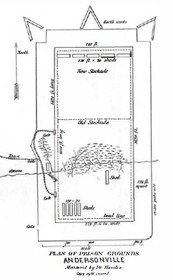
NPS Sign describing Earthworks
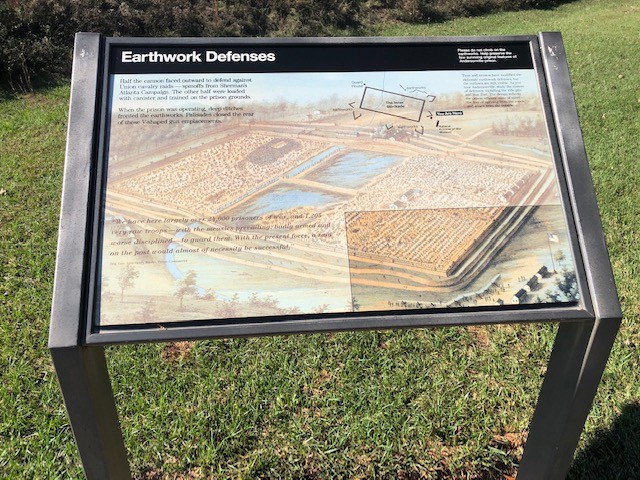
Earthworks at the South end of the prison site
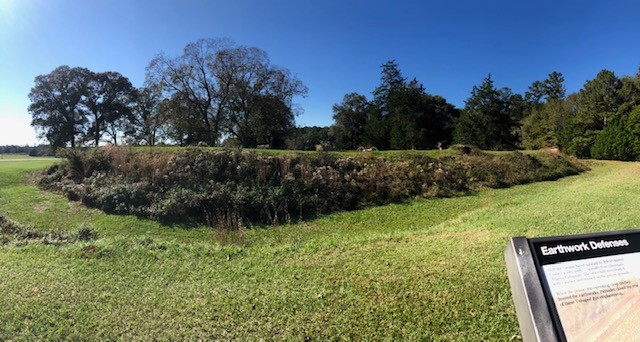
Earthworks at the North end of the Prison Sitee
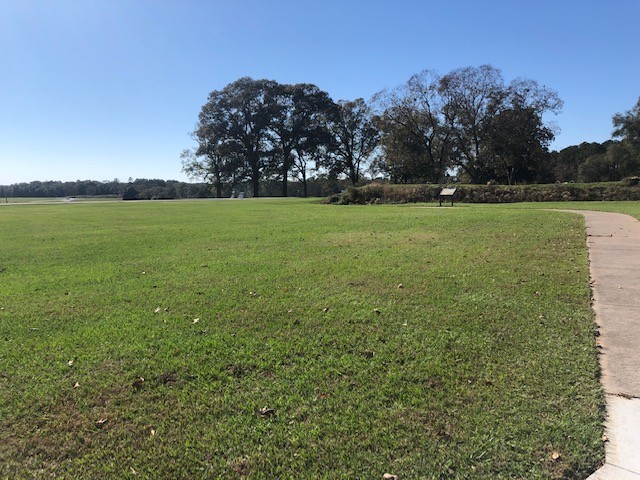
Earthworks with cannon replica
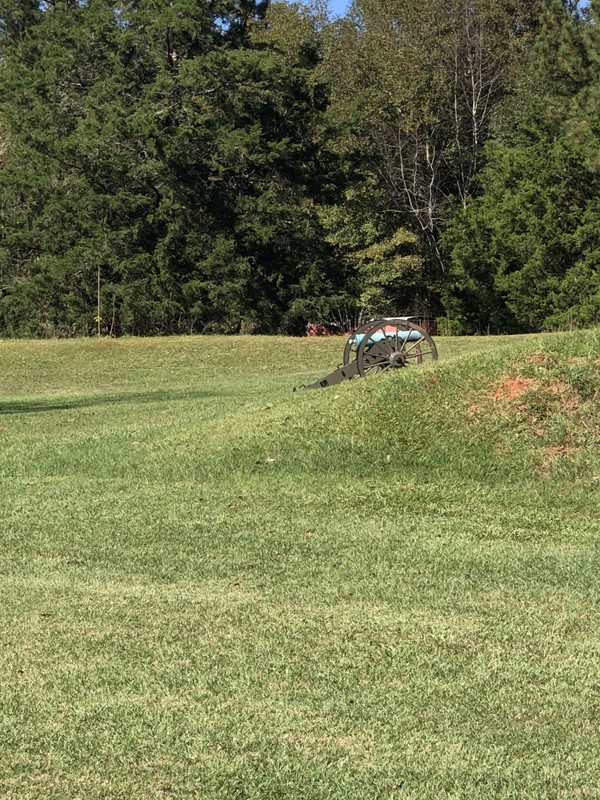
Typical Earthwork Formations
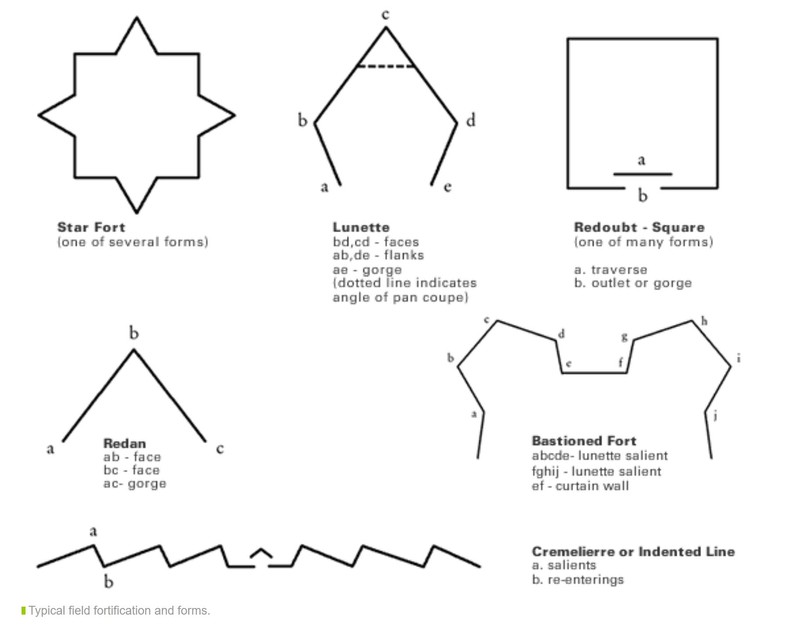
Backstory and Context
Text-to-speech Audio
The earthworks surrounding the prison site were designed to protect Confederate soldiers from possible rebellion or attack by prisoners. Constructed at the corners and along the sides of the stockade, these earthworks created entrenched positions from which Confederate soldiers could easily guard prisoners and guard against attack.[1] Slaves, most likely from the surrounding farms in south Georgia, constructed the mounds. Ovid Futch, a chronicler of the history of the prison, described the forced labor in flowery terms in 1968, writing “the laughter and song of Negro workmen as their axes felled the majestic pines of that virgin forest,” created an illusion of amiable servitude and work on what would become a death camp.[2]
The prison site was originally heavily forested. The Confederacy also impressed local free African Americans into labor to clear the sixteen acres of the camp and build the earthworks surrounding the site.[3] Earthworks were commonly created throughout the Civil War as defense mechanisms for both Union and Confederate forces. The construction of earthworks also created long lasting remnants of the Civil War- the earthworks at Andersonville, like those recently discovered in the remnants of another Confederate prison, Millen prison in Atlanta, remain the longest lasting and most visible evidence of these camps.[4] The earthworks at Andersonville show several types of Civil War era earthwork formations, including the Star Fort, Lunette, Cremelierre, and Redan. [5]
Soldiers imprisoned at Andersonville recalled the earthworks, with one memoir reading,
“Around this ill-fated spot were stretched a cordon of connected earthworks, which completely enveloped the palisades, and commanded, with seventeen guns, every nook and corner of the enclosure. The forts were well constructed, and provided against the chances of sudden and desperate assaults. The cannon were well mounted and placed in barbette and embrasure. Lunette and redoubts covered all the approaches to the two great gates. Several regiments of the rebel reserves constantly occupied the forts and trenches, and guarded closely every avenue. Escape was impossible.”[6]
Sources
[1] “Andersonville Prison Site Walking Tour Brochure,” National Park Service, accessed November 14, 2020.
[2] Ovid L. Futch, History of Andersonville Prison revised ed. (Gainesville: University Press of Florida, 2011), 5.
[3] Robert Davis, “Andersonville Prison,” in The Civil War in Georgia ed. John C. Inscoe (Athens: University of Georgia Press, 2011), 142.
[4] Phil Gast, “Major Archaeological find at site of Civil War Prison,” CNN, August 17, 2010, https://www.cnn.com/2010/US/08/14/georgia.civil.war.camp/index.html
[5] "Sustainable Military Earthworks Management," National Park Service, U.S. Department of the Interior, accessed December 20, 2020. https://www.nps.gov/tps/how-to-preserve/currents/earthworks/introduction.htm
[6] Augustus C. Hamlin, Martyria; or, Andersonville Prison (Boston: Lee and Shepard, 1866), 24. Project Gutenberg, accessed December 15, 2020.
https://www.nps.gov/ande/learn/historyculture/camp_sumter_history.htm
Personal photograph, Erin Del Giudice November 14, 2020
Personal photograph, Erin Del Giudice November 14, 2020
Personal photograph, Erin Del Giudice November 14, 2020
Personal photograph, Erin Del Giudice November 14, 2020
nps.gov
